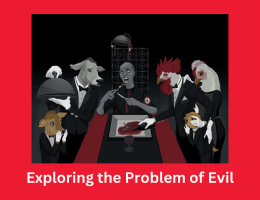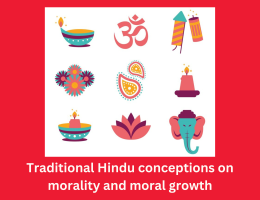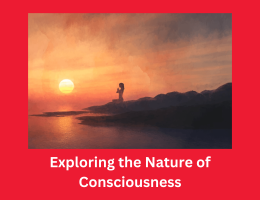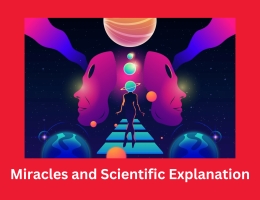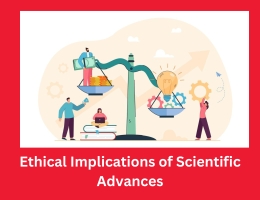
Traditional Hindu conceptions on morality and moral growth
- By admin --
- Sunday, 07 Apr, 2024
INTRODUCTION
Morality is the distinction between proper (or right) and negative (or incorrect) intentions, decisions, and acts. The phrase morality comes from the Latin phrase moralitas, which means manner, character, proper conduct. It's a captivating, dynamic concept. A multitude of organic, sociological, cultural, and theological foundations have an effect on ethical beliefs. Different humans develop up with extraordinary moral ideals in the same placing. The manner someone's genetic composition interacts with their environment determines it.
The evolution of morality has been studied for many years[1,2], and within the ultimate several years, our expertise of the neuro-organic and psychological systems underlying morality has grown extensively.
MODERN THEORIES OF MORAL DEVELOPMENT
Theories primarily based on biology
A person's moral boom does not begin at start. Although someone's surroundings may affect gene expression, temperament is generally determined through their genes. Therefore, it appears to reason that our whole increase, along with our moral improvement, would be motivated via both our genetic make-up and the environments we revel in. We might not linger on this more, even though, because it isn't the goal of this assessment to investigate it in in addition element.
Mental fashions
According to theories of cognitive improvement, ethical increase in children takes place in phases and is meditated in different cognitive changes in their developing brains. These theorists include Jean Piaget (henceforth referred to as Piaget) and Lawrence Kohlberg (hereby known as Kohlberg). Piaget identified as a genetic epistemologist who was involved inside the evolution of human know-how. He clarified that the aim of genetic epistemology is to provide an explanation for expertise specially clinical understanding by means of analyzing its sociogenesis, history, and, most significantly, the mental underpinnings of the principles and procedures that shape its foundation. Piaget's principle states that morality develops during two phases. During the primary stage, called Heteronomous morality, infants begin to perceive legal guidelines as absolute and determined via authority. One's activities are decided via rewards and penalties. The next level is called Autonomous morality, in which human beings are able to understand morality as being connected to dreams and that laws are bendy, shifting past the idea of effects.
THE HINDU LITERATURE
The Vedas, which include the oldest ideas of Hinduism and are divided into 4 subcategories: the Rig Veda, Yajur Veda, Sama Veda, and Atharva Veda, are the most tremendous texts in Hinduism. The Karma-Kanda and Jnana-Kanda Vedas are two more divisions of these four Vedas. While Jnana-Kanda exclusively addresses the ontological realities the nature of the arena, consciousness (or self), and the God noted in the Vedas as Brahman Karma Kanda offers with rituals and prayers. In order to examine if they may be associated with one another or whether there are any essential differences between them, it logically examines their dating. As the synthesis of the Vedas, the lessons discovered within the Jnana-Kanda element are called Vedanta.
The ethical catch 22 situation in Bhagavad Gita
The Bhagavad Gita is taken into consideration to be many of the most crucial and quite reputable non secular scriptures among Hindus. It has always been crucial. It is broken up into 18 chapters, totaling seven hundred verses. It is regarded as a literary traditional due to its splendid poetry and is thought to encompass the spirit and essence of Hindu philosophy. The Bhagavad Gita is considered to be the inspiration of all Hindu texts, according to renowned Hindu reformer Ram Mohan Roy. The context wherein the Bhagavad Gita is located is critical to comprehending it. It is blanketed within the famous epic Mahabharata, that is frequently credited to the wise Vyasa. The warfare centers at the conflict for Hastinapur's crown. The five sons of King Pandu, known as the Pandavas, and the hundred brothers, known as the Kauravas, who are descended from King Kuru, are cousins and have interaction in fight on this conflict.
The Purusharthas
The two most important standards taught in the Vedas and Vedanta are the ontological essence of lifestyles and Dharma, that is roughly equivalent to morality. To eventually have a greater philosophical understanding of the nature of reality, it's miles essential to collect a radical comprehension of Dharma and all of its parts. Since Dharma isn't always an easy problem to understand, we will first contextualize it in the four Purusharthas (human endeavors) as defined within the Vedic lifestyle. Purushartha denotes an goal, cause, or intention of human existence. It's crucial to apprehend this essential idea of the Vedic tradition. Man finds life's reason and continues society going with the aid of finishing the Purusharthas.

